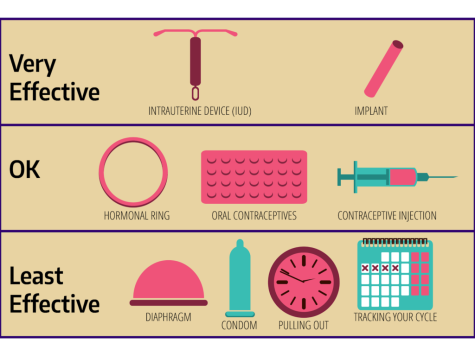OPINION: Abortion affecting minorities within the United States
As the restrictions on abortion become tighter and the resources for women seeking the procedure become more scarce, women across the country, especially minorities, are being drastically affected.
April 21, 2022
Around the globe, and even in America, abortions are being banned completely, sometimes to the extent of sending women to jail to serve time for what they call “first-degree murder”. Some even face serving life in prison.
California recently established a law where a woman can only receive an abortion at or after the viability of the fetus if their life or health is at risk. This law was enforced as of January 1, 2022. Many women that were interviewed felt as though the passing of the new law meant their own rights were disappearing.

The resources surrounding abortion are scarce. For some, they must travel hundreds of miles to have an abortion or take advantage of the resources that Planned Parenthood and other clinics provide.
For minority women, the problem is so much worse.
According to the Guttmacher Institute, “In the United States, the abortion rate for black women is almost five times that for white women.” Hispanic women, however, have double the rate of abortion compared to white women, demonstrating the disproportionate abortion laws that primarily affect minorities. This fact holds true at all income levels except for women below the poverty line, where Hispanic women have slightly higher rates than black women.
According to this pattern, minority women are not given the necessary resources. Countries such as Scotland give women free access to tampons and pads, Russia offers free birth control, Canada offers free pregnancy tests and yet women in the United States are given barely anything.
Furthermore, abortion costs have spiked by a tremendous amount. As Ushma Upadhyay, PhD, MPH explains, “From 2017 to 2020, median patient charges for medication abortion rose from $495 to $560, representing a 13% increase.” A medical abortion, in which pills are used to terminate a pregnancy, costs California patients an average of $306 out of pocket, according to the agency’s analysis, but isn’t available after 10 weeks. After that, the only option for women is surgical, which costs an average of $887 out of pocket.

These types of surgeries are not covered by most insurances, so the patient is often expected to pay in full upfront. As a result, those with financial problems tend to go to places “underneath the table” where surgery or the pill is an affordable option. This dangerous route results in preventable deaths as these vulnerable women were simply seeking affordable and accessible care.
One interviewee from Foothill Technology High School (Foothill Tech) believes the main reason why many minorities end up keeping their child is due to not being able to afford an abortion. They expressed, “I feel that some places such as poorer cities and states with low-income hospitals don’t have the correct materials or the accessibility that would allow them to do the procedures.”
Many believe that birth control is the safest option to avoid pregnancy, but little do they know that birth control tends to be very expensive due to the fact that insurance can only cover so much. There are some companies that offer free birth control, however the person must meet the company’s specific criteria in order to receive the deal. It’s not as cheap or accessible as many may believe.
Since it is a prescription drug, birth control’s cost can range from $60 to $90 for a three month supply. Additionally, in 26 states, birth control is banned for unmarried women. An anonymous Foothill Tech student explained how they believe “[birth control] absolutely should be free or even a much cheaper price because some people don’t want to get pregnant and at times it happens accidentally, but when these contraceptives are more accessible, it could help many others from having to go through a unwanted pregnancy that could have been prevented by cheaper contraceptives.”
The sex education that students receive in school only scratches the surface of a well-rounded curriculum. Women often aren’t taught enough about birth control being an option to prevent pregnancy, and are instead repeatedly told to practice abstinence.
This old-fashioned way of teaching does not give teenagers adequate ways of protecting themselves or preventing an abortion. This is where Planned Parenthood’s are important as they teach about protected sex and have resources to help those in need.

However, there is only one Planned Parenthood in Ventura, California, with the next being in Santa Barbara, California. This makes it harder for women living in locations like Ojai or Port Hueneme, as they must travel to receive the resources they need. Contrastingly, in the wealthier parts of California such as Los Angeles, Planned Parenthoods are plentiful as compared to poorer areas.
An anonymous Foothill Tech student voiced, “Definitely, people need to be educated on resources offered by Planned Parenthood such as pregnancies, having protected sex, etc. as those resources will definitely lessen the percentages within our community of AIDS and pregnancies, but only if our community becomes educated.”
Correction: An earlier version of this article misstated the California abortion law in effect as of Jan. 1, 2022. It has been corrected.

















FTHS Alum 21 • Apr 22, 2022 at 9:59 am
I think this should be considered an opinion article